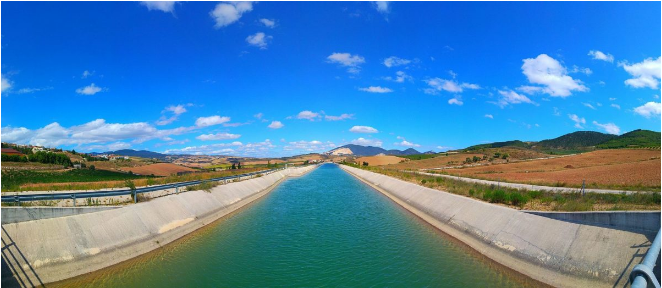The Navarra regional government is promoting a photovoltaic project proposed by Spain’s National Association of Photovoltaic Energy Producers (Anpier) to generate sustainable electricity by covering with solar panels the Navarra Canal, one of the country’s largest artificial irrigation canals.
The regional government said the project could have a capacity of up to 160 MW, which would mean doubling the PV capacity currently installed in the region.
Juan Antonio Cabrero, vice president and delegate of Navarra in Anpier, addressed the government of Navarra last April, indicating the multiple benefits of carrying out this project for the environment, as it is a clean source of electricity generation that would not lead to an occupation of large areas of natural land.
Cabrero also stressed that this kind of project would help reduce the evaporation of water, a scarce and necessary source for agricultural development in the region, noting that the cooling effect of the water is also beneficial to the energy business, as it increases the efficiency of the solar panels themselves. According to the government, the loss of water through evaporation would be avoided by 30%.
According to a study presented to the Department of Rural Development and Environment by companies Energi.k and Naga Solar, the proposed project is technically and financially viable as it would significantly avoid shadowing.
Anpier explains that this proposal is replicable in all channels with similar characteristics that exist in all the autonomous communities of Spain. “At Anpier, we have been supporting small and medium-sized photovoltaic installations and asked that they are implemented in places where distribution and transmission networks are more efficient, where existing infrastructures can be used, or in places that do not present natural heritage or without specific agricultural use, where the installations do not alter the natural habitats and farmland,” the association said.






